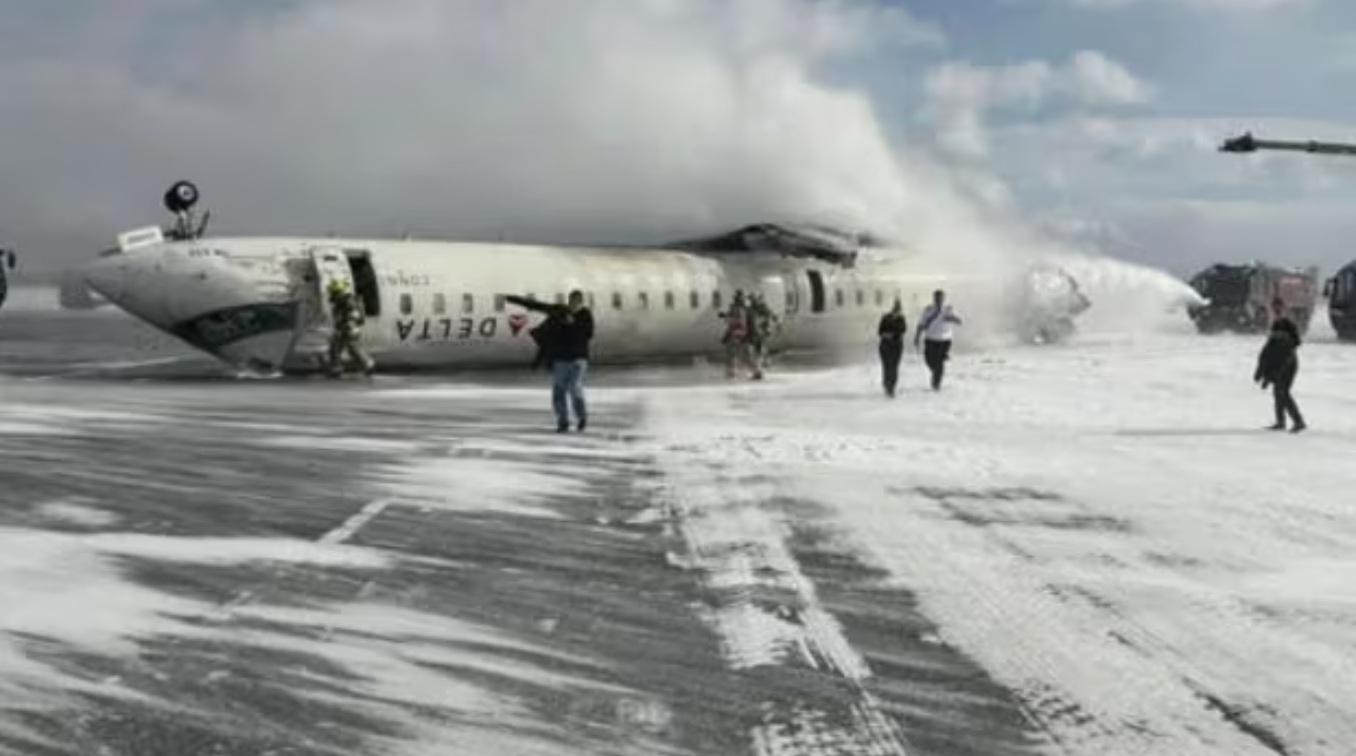In a dramatic turn of events, a Delta Airlines plane crashed and landed upside down at Toronto Pearson International Airport on Monday. Despite the alarming nature of the incident, all passengers aboard the aircraft survived. However, 18 people, including a child, sustained injuries, as reported by Peel Regional Paramedic Services. The accident has raised questions about aviation safety, especially in light of several recent plane-related incidents worldwide.
X
Experts suggest that a combination of factors helped ensure the passengers’ safety during this terrifying experience. The engineering of the aircraft, its design, and safety measures such as seatbelts played significant roles in minimizing injuries. Mike McCormick, an associate professor and program coordinator for air traffic management at Florida’s Embry-Riddle Aeronautical University, explained that aircraft are engineered to withstand extreme situations, including flips. “It is very rare for a plane to flip upside down, but they are designed to handle such scenarios,” McCormick said in an interview with USA Today.
One of the most important safety features on airplanes is the seatbelts. McCormick pointed out that seats on aircraft are designed to endure forces up to sixteen times the force of gravity. This ensures that passengers stay securely in place even if the plane overturns. “The seatbelts are essential during takeoff and landing to prevent any injuries,” McCormick added. “In the case of an aircraft flip, the seats are designed to keep passengers securely strapped in, provided there are no loose objects in the cabin.”
In addition to seatbelts, the structural components of the aircraft are designed to detach in specific situations, such as when the plane flips. The wings and tail are built to separate to reduce the risk of further damage or danger. This engineering, combined with the strength of the aircraft, played a role in keeping the situation from worsening.
Another critical factor in ensuring the passengers’ safety was the crew on board. The trained cabin crew is responsible for managing emergency situations, and their swift actions were vital after the crash. They followed protocols to ensure a safe evacuation of passengers, even in the chaotic aftermath. McCormick emphasized that the true value of flight attendants is often seen in times of crisis. “Most people think of flight attendants as serving refreshments, but during emergencies, their training and experience are what truly make a difference,” he said.
The small size of the Bombardier CRJ900 aircraft may have also contributed to the safety of the passengers. Arnold Barnett, a leading aviation safety expert, explained that the cabin’s relatively low height of about six feet meant passengers wouldn’t have fallen far during the crash. This likely minimized injuries during the plane’s flip.
First responders on the ground also played an essential role in preventing further damage. Hassan Shahidi, President and CEO of the Flight Safety Foundation, commended the quick actions of emergency personnel. They swiftly evacuated passengers from the wreckage and applied fire-resistant foam to prevent the aircraft from igniting. “The quick response of first responders helped prevent a much worse situation,” Shahidi said.
While the crash raised significant concerns about aviation safety, the combination of aircraft design, trained personnel, and timely responses ultimately ensured the survival of the passengers.




